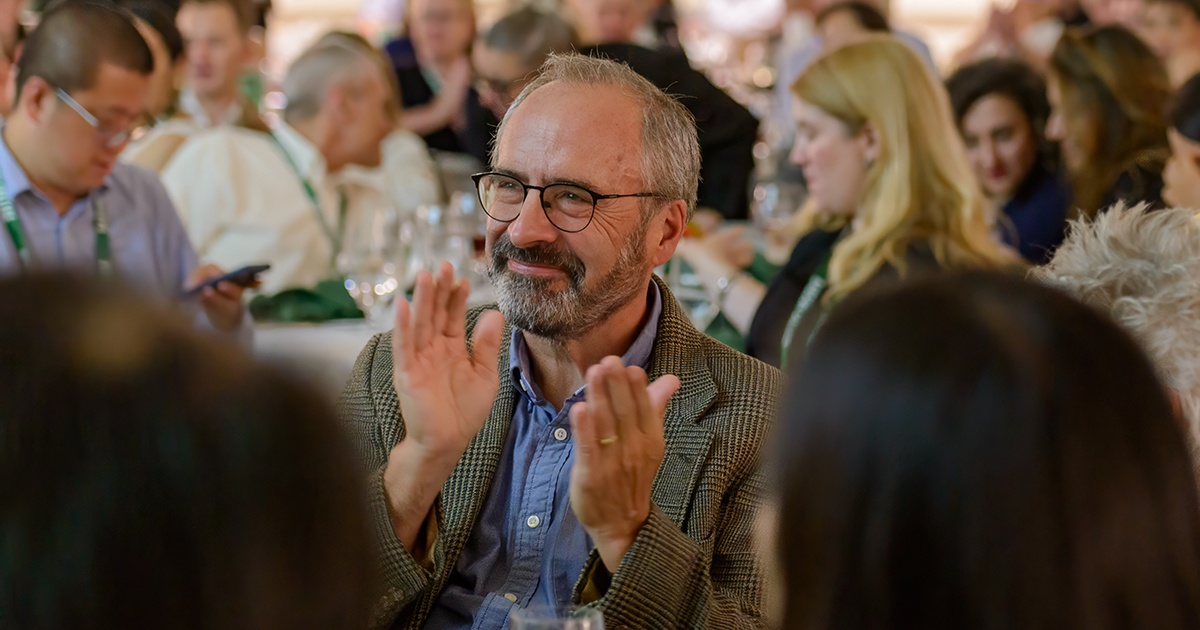Babson Alumnus Brings Entrepreneurial Spirit to Nation’s First Major Offshore Wind Farm

Álvaro Ortega Sebastián MBA’15 says he envisions himself as an entrepreneur, even though he’s the financier behind the nation’s first large-scale offshore wind farm, a project that has the potential to revolutionize the way people power their homes in the United States.
The $2.8 billion project “is not a startup in the sense that we started in a garage,” says Ortega Sebastián, chief financial officer of Vineyard Wind. “It’s entrepreneurial in the sense that it’s the first of its kind.”
Indeed, Vineyard Wind, which was just approved for operation by the Biden administration in May, will be the first large-scale offshore wind farm in the United States. The project will install up to 62 turbines, spaced 1 nautical mile apart, in the Atlantic Ocean about 12 nautical miles off the coast of Martha’s Vineyard, Massachusetts, to generate 800 megawatts of electricity. Ortega Sebastián says that’s enough to power about 400,000 homes, which he equates to removing 325,000 vehicles from roadways. The turbines are General Electric Haliade-X turbines, the largest available.
The country’s two existing wind farms, off the coasts of Virginia and Rhode Island, together produce just 42 megawatts of electricity.
From Setbacks and Delays to Greenlighted
Vineyard Wind is a joint venture of Copenhagen Infrastructure Partners, a Danish pension management fund, and the energy firm Avangrid , the U.S. subsidiary of the Spanish company Iberdrola.

Ortega Sebastián, originally from Spain, started his career with Iberdrola, and, after moving to the United States, took a position at Avangrid Renewables in Oregon. In 2013, he moved to Maine, working for the same company, to pursue his MBA at Babson.
As the CFO at Vineyard Wind, Ortega Sebastián says he “still needs to do the big things and the small things.” This includes everything from “traveling to New York City and talking to banks” to “processing online banking payments” in his office. “I have a big title, but I still have to get my hands dirty,” he adds with a laugh.
He acknowledges that attracting investors and securing financing became easier after the project was greenlighted by the federal government in May. Still, the wind farm project has faced numerous setbacks and delays that went on for years. The previous administration required the wind farm to perform an additional environmental impact statement (EIS), a process that analyzes all the effects a proposed project will have on the surrounding area and can take years to complete.
Bringing Jobs to Coastal Communities
Though he’s the wind farm’s financing guru, Ortega Sebastián says he gets involved in other aspects of the operation, from tackling supply chain issues to dealing with insurance and risk matters to reviewing complex legal, financial, and environmental documentation in preparation for the project’s financings and request-for-proposal process.
He credits Babson with instilling in him “an entrepreneurial mindset” that allows him to “start with something small and adapt as it grows and expands.”
Limited opposition from property owners and commercial fishermen has been “mitigated by local support in Martha’s Vineyard and coastal areas, which has been huge,” Ortega Sebastián says. He argues that the wind farm will “improve life in coastal communities.”
“I have a big title, but I still have to get my hands dirty.”
Álvaro Ortega Sebastián MBA’15
This includes creating much-needed jobs. The Biden administration estimates that Vineyard Wind will create about 3,600 jobs, according to The New York Times. Ortega Sebastián says these will include well-paying union jobs. Future offshore projects are expected to create jobs in factories that will manufacture equipment to be used by the wind farms. In fact, an entire local supply chain will need to be created, Ortega Sebastián says. This could include repurposing vessels used in the oil and gas industry that “could be used for renewable energy.”
There are still complex issues that need to be worked out—including dealing with the inevitable litigation that follows the permitting of a massive project—but Ortega Sebastián remains optimistic. He says the company plans to start delivering wind energy to homes in 2023.
“Offshore wind is going to be a game changer,” he says. “It’s needed—we’re already behind our clean energy goals—and it’s an industry that’s only going to grow.”
Posted in Community, Entrepreneurial Leadership






